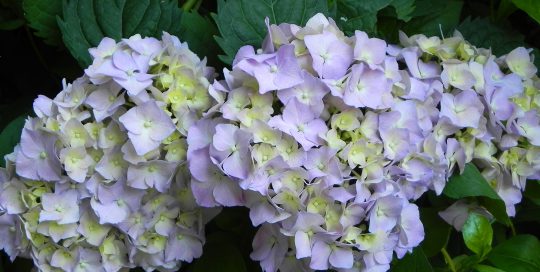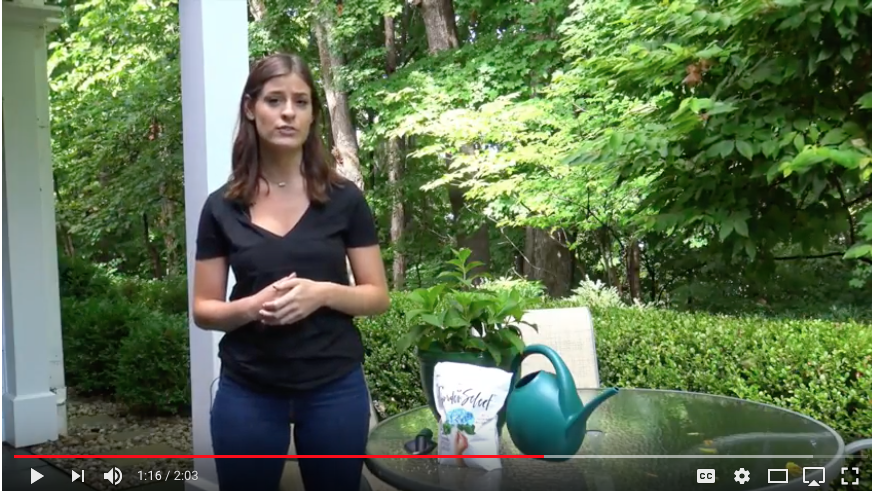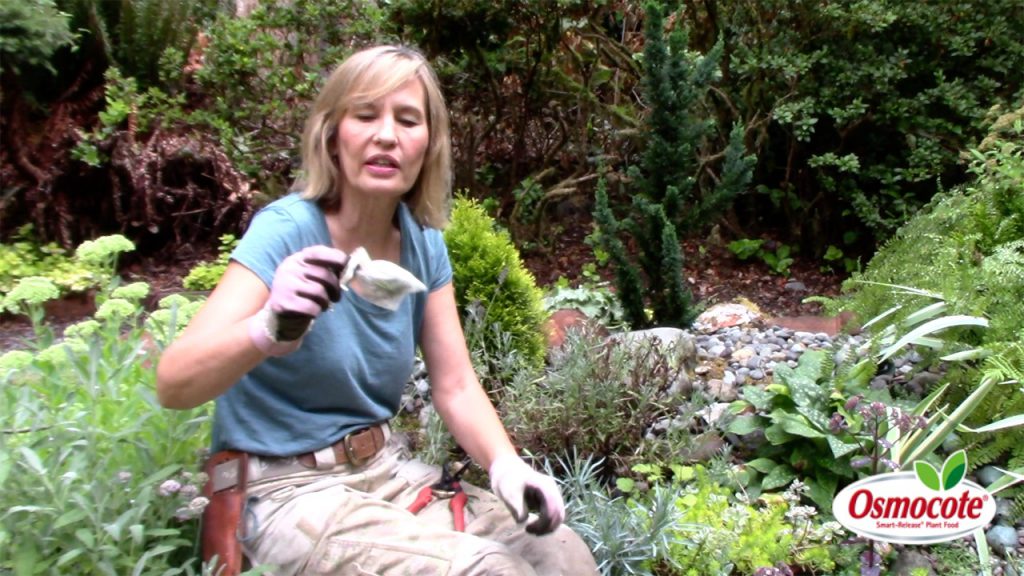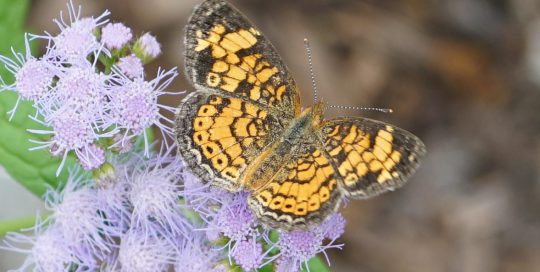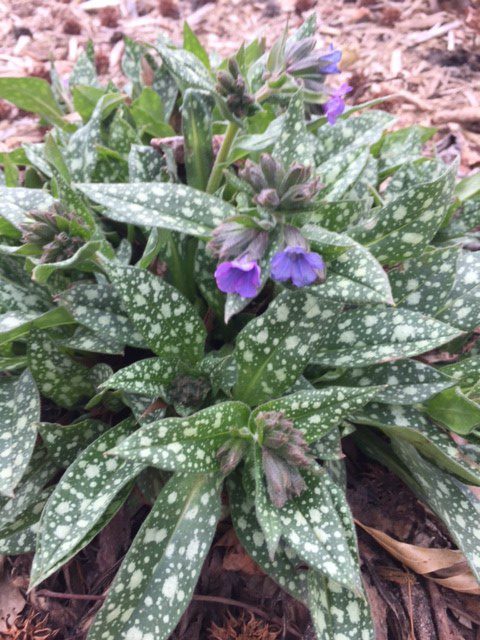Falling for Blue
Hardy plumbago (Ceratostigma plumbaginoides) offers two seasons of interest for the price of one. This shade or sun groundcover sports true blue flowers in late summer just before its leaves turn red for fall.
Fall tends to enter the garden scene in the form of mums—typically in shades of gold. Finally, garden centers are offering asters as a blueish counterpoint. While it’s best to add hardy asters to the garden in spring, it’s hard to resist those pots of blue cushions right next to the mums.
Starting its bloom in late summer, bluebeard (Caryopteris) carries on through fall if the weather is on the dry and sunny side. This plant is considered a subshrub, meaning that in cooler climates it should be cut back in late spring so that it will be bushier and have more blooms. Sometimes referred to as “blue mist spirea,” there is no relation between the two.
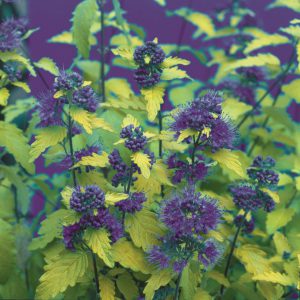
Caryopteris ‘Sunshine Blue’ – photo by Proven Winners
Don’t forget the berries, which typically arrive in late summer-early fall. Viburnumdentatum, also known as arrowwood viburnum provides low-maintenance color in the form of glossy blue berries. A compact hybrid, Viburnum ‘All That Glitters’ is more compact than the species, and produce fruit if its pollinator, ‘All That Glows’, is planted nearby.
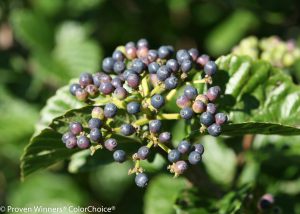
Viburnum ‘All That Glitters’ – photo by Proven Winners
Blue deliberations
Although blue tends to fade into the background if placed next to hot colors like yellow, the opposite is true if blue is the color of a reflective surface. I placed a blue gazing globe at the end of a path between golden-hued plants, and it was the first thing my eye landed on.
I like to use blue as an accent in the garden, simply because there is never enough of true blue in a garden, so it attracts attention. In the case of the blue gazing globe, the pale blue reflects more light than the darker colors around it. An accent of true blue provides a fixed eye-catcher in the midst of plants whose flowers and leaves change throughout the season.
When plant-shopping this spring, look for plants that have blue flowers, or bluish or silvery leaves. There are more than you would think. And don’t forget the blue you don’t have to work for—the sky on a beautiful day.

